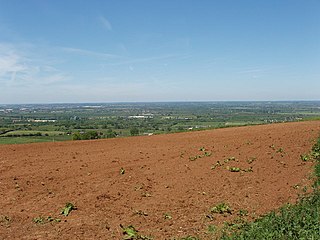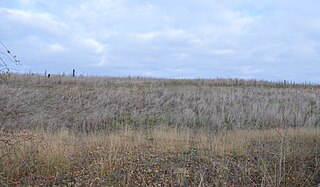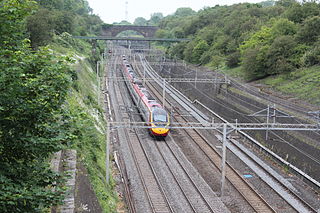| Site of Special Scientific Interest | |
 | |
| Area of Search | Buckinghamshire |
|---|---|
| Grid reference | SP851242 |
| Interest | Geological |
| Area | 1.5 hectares |
| Notification | 1986 |
| Location map | Magic Map |
Warren Farm, Stewkley is a 1.5 hectare geological Site of Special Scientific Interest in Stewkley in Buckinghamshire. [1] [2] It is a Geological Conservation Review site. [3]

A Site of Special Scientific Interest (SSSI) in Great Britain or an Area of Special Scientific Interest (ASSI) in the Isle of Man and Northern Ireland is a conservation designation denoting a protected area in the United Kingdom and Isle of Man. SSSI/ASSIs are the basic building block of site-based nature conservation legislation and most other legal nature/geological conservation designations in the United Kingdom are based upon them, including national nature reserves, Ramsar sites, Special Protection Areas, and Special Areas of Conservation. The acronym "SSSI" is often pronounced "triple-S I".

Stewkley is a village and civil parish in the Aylesbury Vale district of Buckinghamshire, England. The village is about 5 miles (8 km) east of Winslow and about 4 miles (6 km) west of Leighton Buzzard. The civil parish includes the hamlets of North End and Stewkley Dean.

Buckinghamshire, abbreviated Bucks, is a ceremonial county in South East England which borders Greater London to the south east, Berkshire to the south, Oxfordshire to the west, Northamptonshire to the north, Bedfordshire to the north east and Hertfordshire to the east.
This site was first described in the early nineteenth century. It is the most northern exposure of the Jurassic Portlandian basin, and is important for palaeographic reconstruction. It is described by Natural England as "vital to our understanding of the late Jurassic environments, stratigraphy and palaeogeography. [1]
The Jurassic period was a geologic period and system that spanned 56 million years from the end of the Triassic Period 201.3 million years ago (Mya) to the beginning of the Cretaceous Period 145 Mya. The Jurassic constitutes the middle period of the Mesozoic Era, also known as the Age of Reptiles. The start of the period was marked by the major Triassic–Jurassic extinction event. Two other extinction events occurred during the period: the Pliensbachian-Toarcian extinction in the Early Jurassic, and the Tithonian event at the end; however, neither event ranks among the "Big Five" mass extinctions.
Natural England is a non-departmental public body in the United Kingdom sponsored by the Department for Environment, Food and Rural Affairs. It is responsible for ensuring that England's natural environment, including its land, flora and fauna, freshwater and marine environments, geology and soils, are protected and improved. It also has a responsibility to help people enjoy, understand and access the natural environment.
There is no public access to the site, but it can be viewed from a footpath through Warren Farm.
| Wikimedia Commons has media related to Warren Farm, Stewkley . |
















